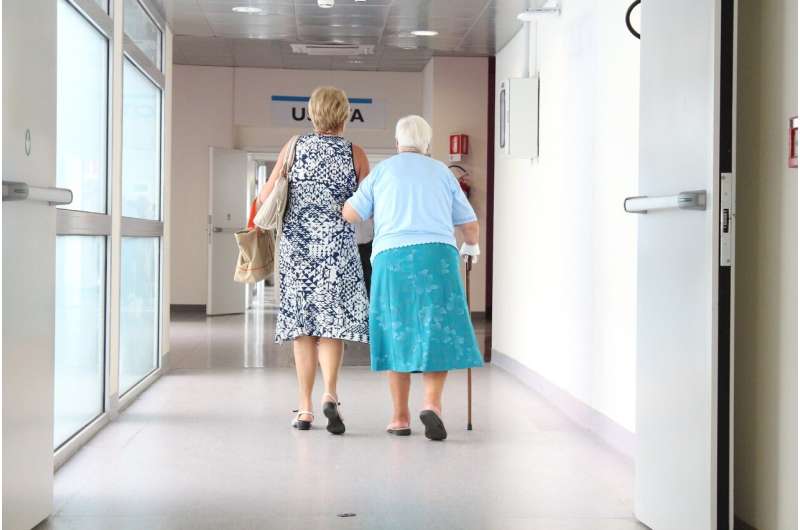Study links overactive bladder to increased falling risk in older adults

A team of University of Alberta researchers focused on aging Albertans has found that urinary incontinence could be a contributing factor in falls among older adults.
In a study published in the journal PLOS ONE, the researchers showed for the first time that the feeling of having to pee acts as a distracting factor that increases the risk of falling.
"Falls are the leading cause of accidental death in seniors, and many people don't know that having bladder control problems makes you about twice as likely to fall over," said William Gibson, lead author of the study and assistant professor of geriatric medicine.
"There's not previously been a lot of evidence that treating people's incontinence reduces their risk of falling. So this is a jumping-off point, because now we've demonstrated that the sensation of urgency is a source of distraction."
The team studied the gait of nearly 30 older adults diagnosed with overactive bladders with the help of the gait lab in the Syncrude Centre for Motion and Balance at the Glenrose Rehabilitation Hospital. Using the lab's 3D capture technology, which takes highly accurate measurements of gait and joint position, the researchers asked subjects to walk the length of the lab and back—first under normal conditions, then while doing a simple cognitive test at the same time, and finally after drinking enough water or tea to make them feel the urge to go to the bathroom.
The team found that the feeling of urgency caused by a full bladder induced similar changes in gait to those caused by the distracting task: The gait of the subjects tended to become slower and narrower, which is associated with increased risk of falling.
"This is pretty good evidence that people with incontinence are being distracted by their bladders, which means that they're less able to concentrate on walking," said Gibson.
"Being balanced and walking require some cognitive inputs, and for young, healthy people, they don't have to think about walking," he explained. "But when you're older, with changes to the brain, it requires more cognitive input to maintain balance. If you've then got a distracting factor of your bladder, it makes you more likely to fall."
One of the issues with incontinence is that despite being common in older adults, it isn't talked about very much, even between a physician and their patient, Gibson said.
"If you don't ask specifically about incontinence, people won't tell you," he said. "There are many reasons for that: People think it's a normal part of getting older, people are embarrassed or think there's nothing you can do about it. But if you're a family physician looking after someone who is having problems with falls, one of the things that should be asked is, 'Are you also having problems with your bladder?' If so, then what can be done about that?"
Gibson said future research could explore whether treating incontinence has any effect on falling risk. One treatment avenue is using medications to treat overactive bladders, but another approach that may show promise is using physiotherapy and special training to reduce incontinence, he said.
Gibson said he hopes the wider health system takes away an increased awareness of the link between incontinence and balance, and a better appreciation of how much of a problem incontinence is.
"This is the first time the link between bladder urgency and falling risk has been demonstrated, and it's nice to be challenging the preconceived notion that the reason people are falling is because they're running for the toilet," he pointed out. "I think we've really put that one to bed and shown that it's much more complicated than that.
"It opens up a big field of potential research, which we'll be doing more of moving forward."
More information: William Gibson et al, Urinary urgency acts as a source of divided attention leading to changes in gait in older adults with overactive bladder, PLOS ONE (2021). DOI: 10.1371/journal.pone.0257506




















